While tourists often flock to the Taj Mahal in Agra or the beaches of Goa during their Indian adventures, Delhi stands as a city that tells countless stories through its mix of old-world charm and modern energy. The capital city weaves together centuries of history with present-day life, offering visitors a chance to experience Indian culture at their own pace.
From ancient monuments and bustling markets to peaceful gardens and food havens, here are 20 places in Delhi that deserve a spot on your travel list, whether you’re looking to dive into history or sample the city’s everyday life.
Red Fort

Have you ever imagined what it’s like to walk the same halls as Mughal emperors? At Delhi’s Red Fort, a UNESCO World Heritage site, you can do exactly that. Built in 1639 by Emperor Shah Jahan, this massive red sandstone structure stretches over 250 acres in the heart of Old Delhi. Behind its 70-foot-high walls, you’ll find a remarkable collection of palaces, gardens, and pavilions that tell stories of India’s rich past. From the daily sound and light show to the museums housed in its historic buildings, the Red Fort gives you a real taste of what royal life was like during the Mughal era. You can even shop for traditional crafts at Chatta Chowk, the covered bazaar that’s been running since the 17th century.
Qutub Minar
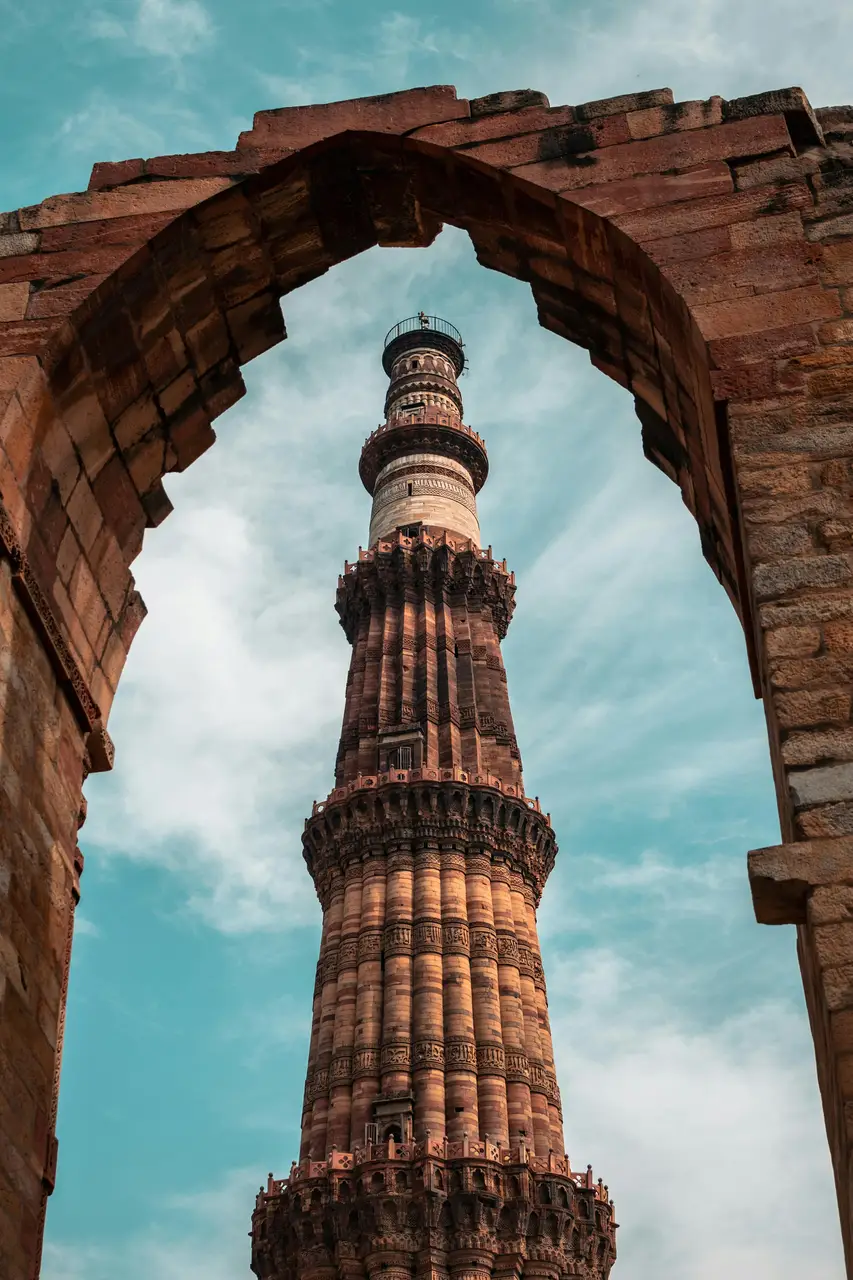
Anyone visiting Delhi simply has to see the Qutub Minar. This UNESCO World Heritage site, built in the 12th century, stands 240 feet tall and is the world’s tallest brick minaret. The tower features five distinct levels decorated with intricate carvings and verses from the Quran, while the surrounding complex includes ancient ruins, mosques, and the famous Iron Pillar that hasn’t rusted in over 1,600 years.
Humayun’s Tomb

Built in 1570, Humayun’s Tomb was Delhi’s first garden-style mausoleum and set the template for the Taj Mahal that would come decades later. Unlike the busy streets of Old Delhi nearby, this UNESCO site feels like stepping into a peaceful Persian paradise. The symmetrical gardens and water channels lead you toward the massive red sandstone structure, where emperors and their families have rested for centuries. What makes this place special isn’t just its size – it’s the way it blends Persian, Turkish and Indian architectural styles, creating something entirely new. The local craftsmen who built it used traditional materials and techniques that were passed down through generations, and you can still see their precise work in every archway and dome. As you walk through the grounds, you’ll spot smaller tombs and buildings scattered throughout, each telling its own story of Delhi’s Mughal past.
India Gate

Standing proud in the heart of New Delhi, India Gate has been a symbol of the nation’s military pride since its completion in 1931. This 42-meter-high war memorial, built from sandstone and granite, honors the 70,000 Indian soldiers who lost their lives in World War I and the Anglo-Afghan War. The wide lawns surrounding the arch buzz with local families having picnics and flying kites, especially during summer evenings when the monument glows under carefully placed floodlights. At its base, the eternal flame – Amar Jawan Jyoti – burns day and night, reminding visitors of India’s brave fallen soldiers. The long stretch of Rajpath leading up to India Gate offers perfect photo opportunities, with the monument framed by rows of trees and fountains that line this ceremonial boulevard.
Interesting Fact:
Much like the Arc de Triomphe in Paris, India Gate stands as a mighty war memorial in the heart of Delhi, honoring over 70,000 Indian soldiers who lost their lives fighting in World War I and other conflicts. At night, the 42-meter-high arch lights up against the dark sky while locals and tourists gather on the surrounding lawns for picnics, making it one of Delhi’s most popular hangout spots.
Lotus Temple
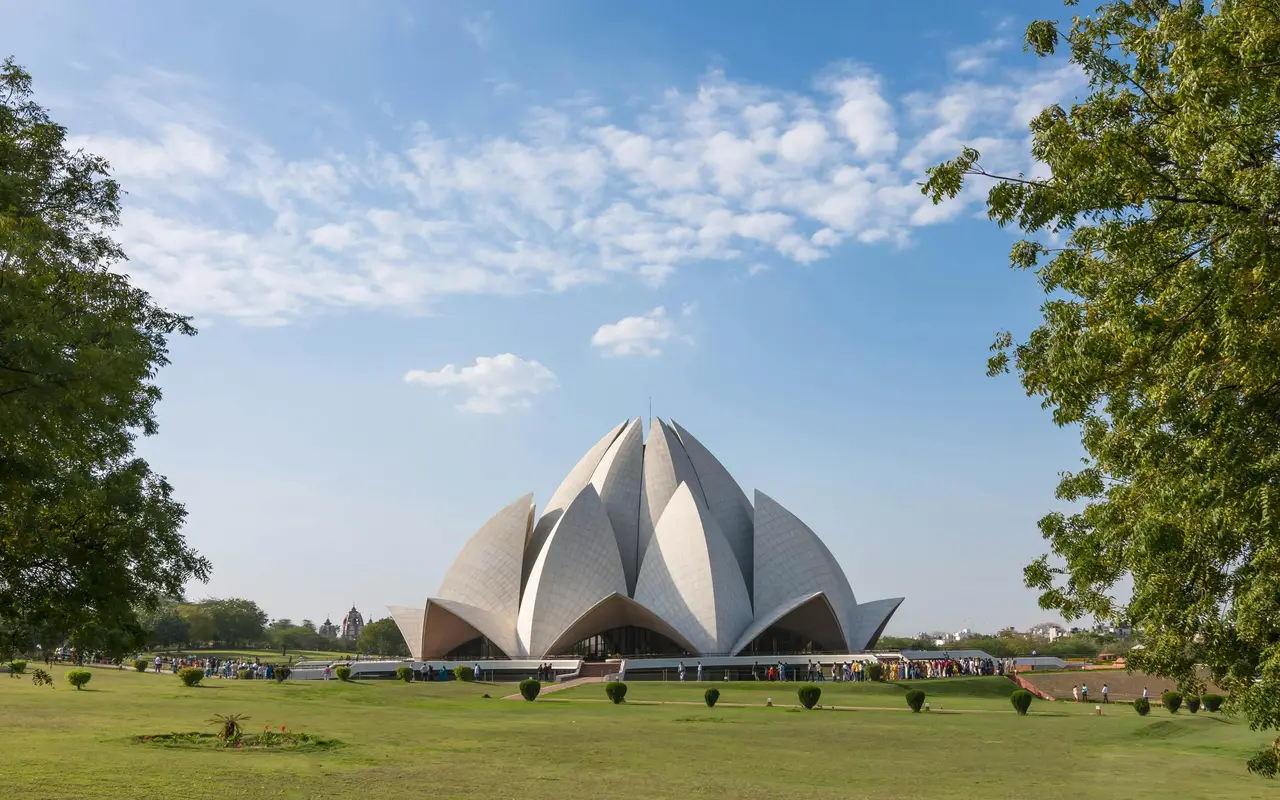
I always recommend the Lotus Temple to anyone visiting Delhi – it’s impossible to miss this unique landmark. Shaped like an enormous white lotus flower, this Bahá’í House of Worship is surrounded by nine peaceful pools and lush gardens. Open to people of all faiths, the temple’s marvelous marble architecture and serene atmosphere make it a perfect spot to escape the city’s busy streets and find a moment of quiet reflection.
Interesting Fact:
The Lotus Temple has to be one of the coolest buildings in Delhi – it’s made up of 27 giant marble “petals” arranged to look like a lotus flower opening up to the sky. While most religious buildings stick to one faith, this temple welcomes people from every religion to come meditate and pray, making it a rare place where you might find Hindus, Muslims, Christians and Buddhists all peacefully sharing the same space.
Akshardham Temple
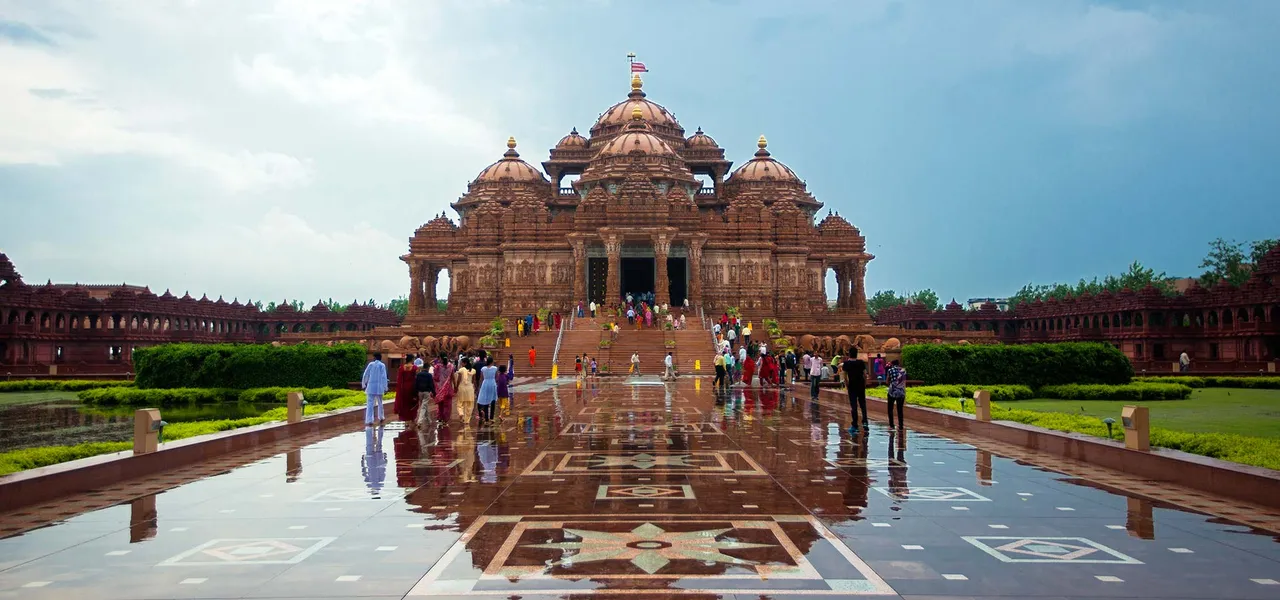
I first visited Akshardham Temple during a quiet afternoon in 2019, and it left an impression that’s hard to shake off. Sitting along the banks of the Yamuna River in East Delhi, this massive Hindu temple complex spans over 100 acres of meticulously maintained grounds. Pink sandstone and white marble create the temple’s distinctive look, while thousands of skilled artisans worked for five years to bring its intricate carvings to life. The main monument stands at the heart of it all, surrounded by perfectly manicured gardens and musical fountains that come alive after sunset. What makes this place special isn’t just its size – it’s how the temple combines traditional architecture with modern technology, offering boat rides and light shows that tell stories from ancient Hindu texts. The evening water show draws crowds to the nine perfectly synchronized pools, where water, light, and music create a display that makes you forget you’re in the middle of busy Delhi.
Jama Masjid
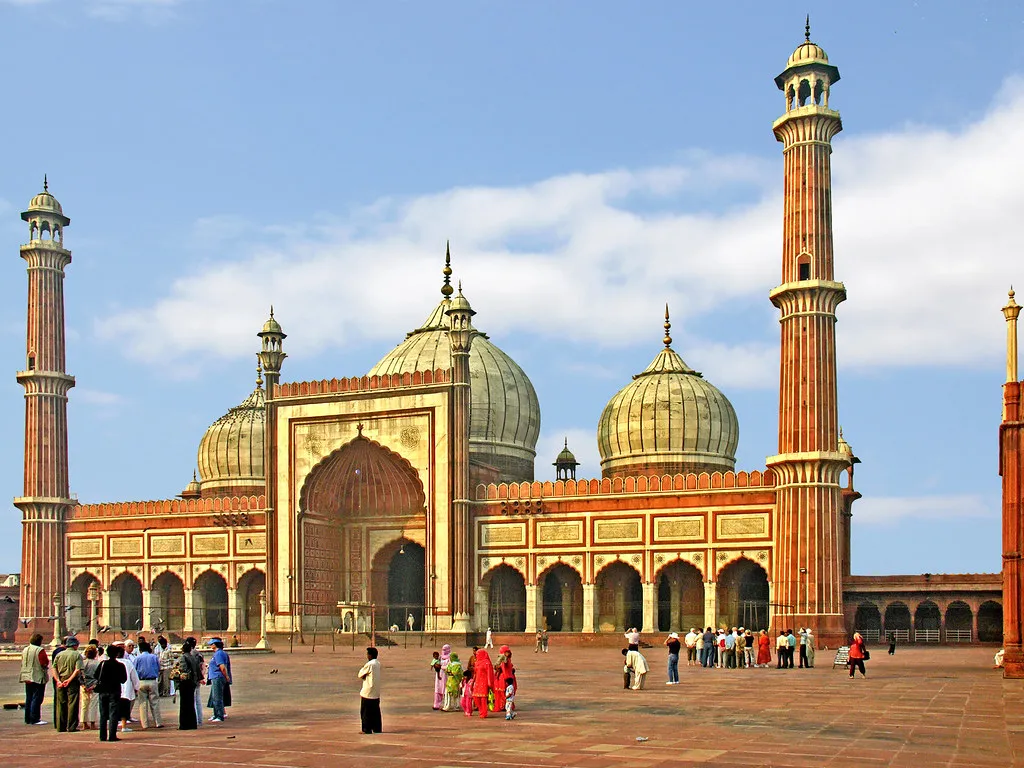
Many visitors come to Jama Masjid for its status as India’s largest mosque, but this historic site offers much more than just religious significance. Built in the 17th century by Mughal Emperor Shah Jahan, the same ruler who commissioned the Taj Mahal, this architectural marvel can hold up to 25,000 worshippers at once. The mosque’s massive courtyard, intricate marble work, and towering minarets provide excellent photo opportunities, while the surrounding Old Delhi bazaars offer a genuine slice of local life. While most tourists visit during daylight hours to climb the southern minaret for city views, the mosque takes on a different character during prayer times when locals gather in their daily routines.
Chandni Chowk
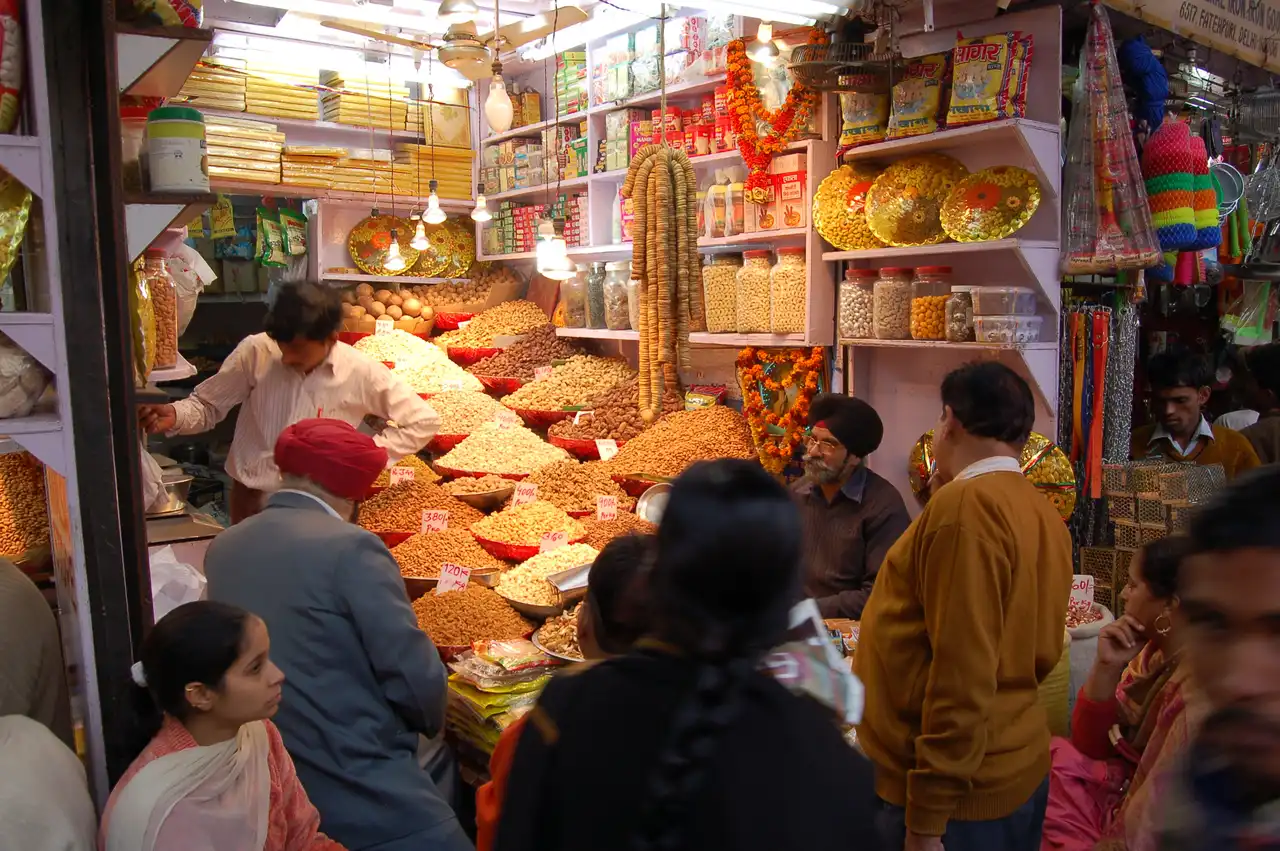
Step into Old Delhi’s most famous market street at Chandni Chowk, where centuries of history mix with the buzz of daily commerce. The narrow lanes are packed with vendors selling everything from spices and saris to electronics and street food. You’ll find some of Delhi’s best food spots here, like the 100-year-old Paranthe Wali Gali for fresh flatbreads and Karim’s for authentic Mughlai dishes. For a cultural experience, visit the massive Jama Masjid mosque nearby, or explore the colorful shops selling wedding items and traditional Indian wear. Come early in the morning to avoid the crowds and enjoy the market at its most authentic.
Lodhi Garden
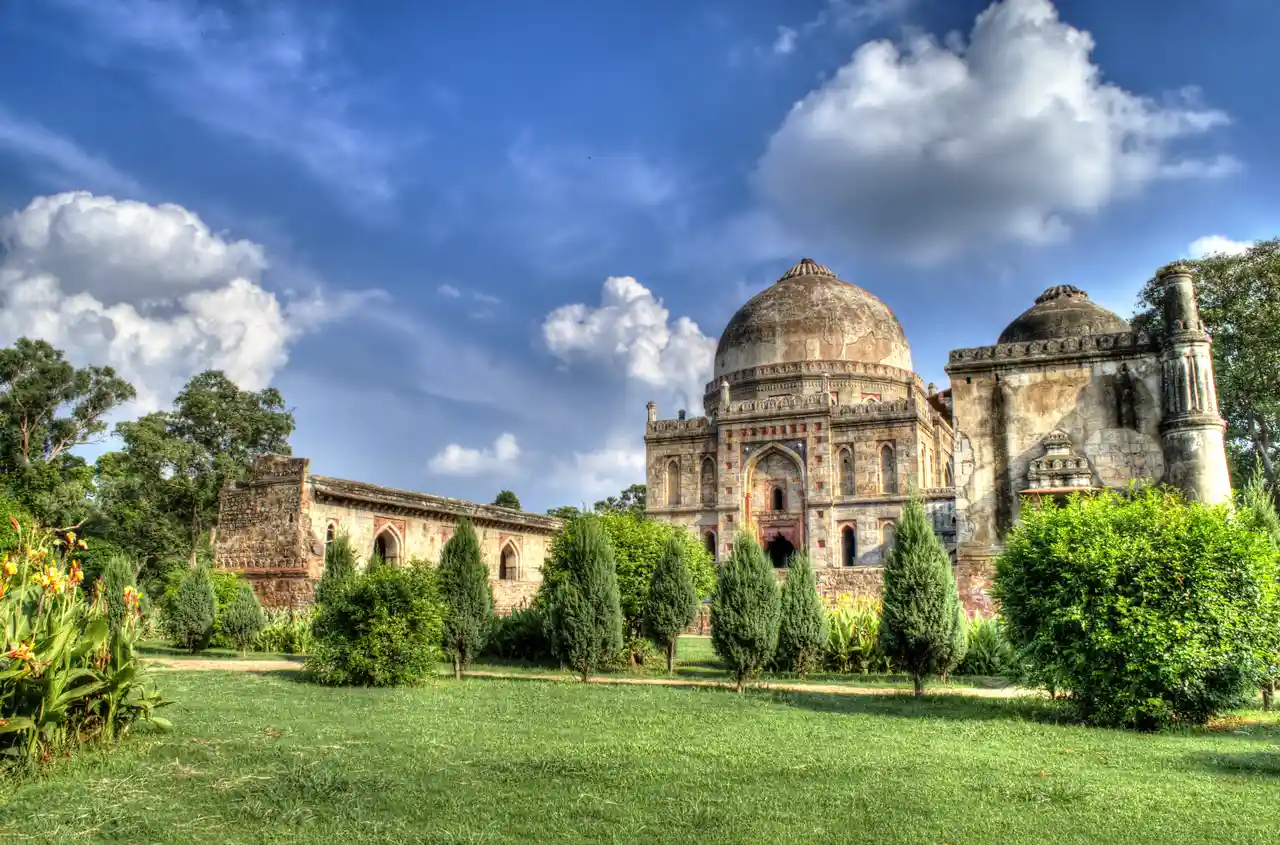
Nestled in the heart of Delhi, Lodhi Garden is a sprawling 90-acre oasis that takes you back to the 15th century. Unlike the city’s busy markets and crowded streets, this serene park offers a peaceful escape where ancient tombs and ruins stand quietly among manicured lawns. As you wander through the green pathways, you’ll spot joggers, couples, and families enjoying picnics under the shade of old trees. The garden houses several impressive Lodhi-era monuments, including the tomb of Mohammed Shah and Sikander Lodi, which tell tales of Delhi’s rich history. Because of its perfect blend of history and nature, locals often come here for their morning walks or evening gatherings, making it feel more like a community space than a tourist attraction. You’ll find small vendor carts selling chai and snacks near the entrances, adding to the authentic Delhi park experience.
Hauz Khas Fort

Hidden away in South Delhi’s trendy neighborhood, Hauz Khas Fort tells a tale of Delhi’s medieval past. Like many historical sites in the city, it combines architecture and nature, with its stone buildings overlooking a large, ancient water reservoir. But unlike other Delhi monuments, this 13th-century complex doubles as a modern hangout spot, where college students and young professionals gather among the ruins. The fort was built during the Delhi Sultanate as both a religious seminary and royal retreat, and you’ll find intricate Islamic architecture mixed with peaceful gardens. Walk through the weathered stone archways, and you’ll discover how seamlessly the old and new Delhi blend here – with hip cafes and boutiques just steps away from centuries-old tombs and pavilions.
National Museum
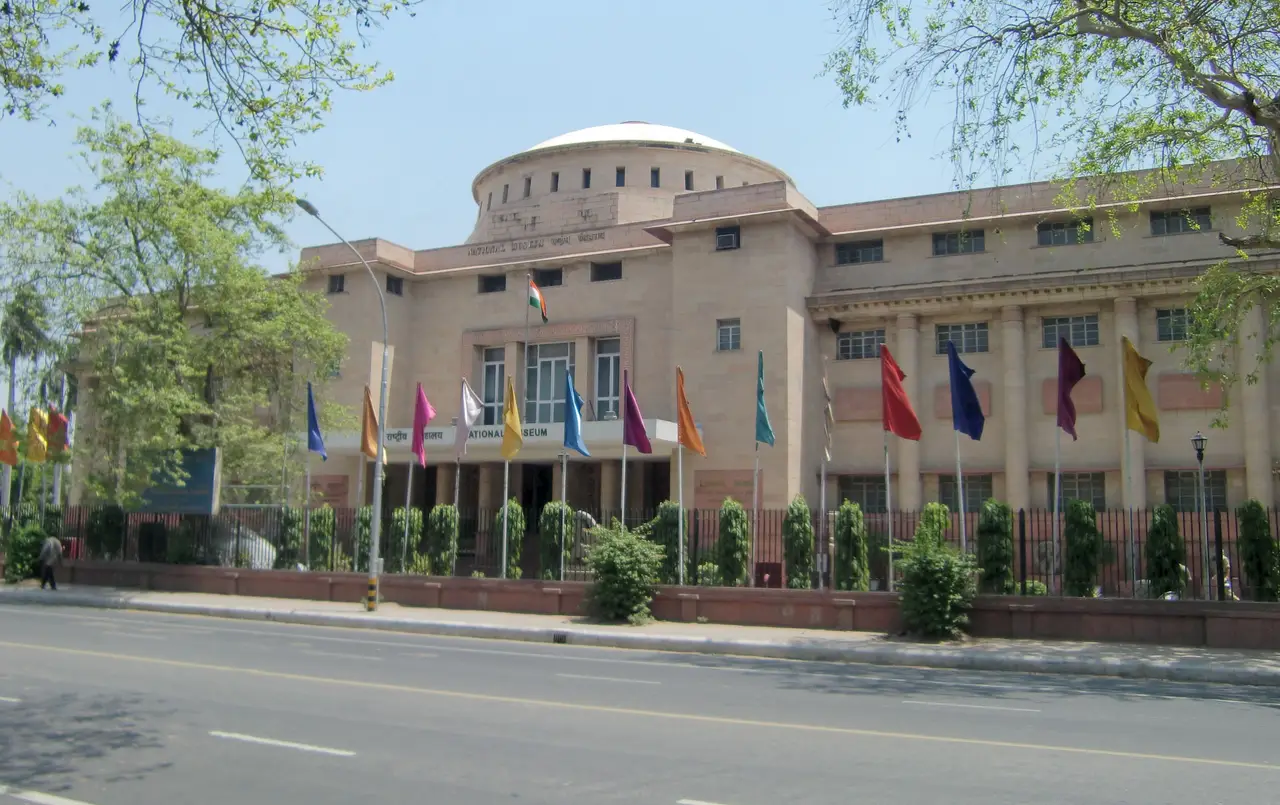
If you want to dive deep into India’s rich history and cultural heritage, the National Museum Delhi is a must-visit spot. Located in the heart of New Delhi on Janpath Road, this massive museum houses over 200,000 artifacts spanning more than 5,000 years – from prehistoric tools to modern works of art. Its extensive collection includes rare sculptures, ancient manuscripts, traditional paintings, and archaeological treasures from the Indus Valley Civilization.
Purana Qila
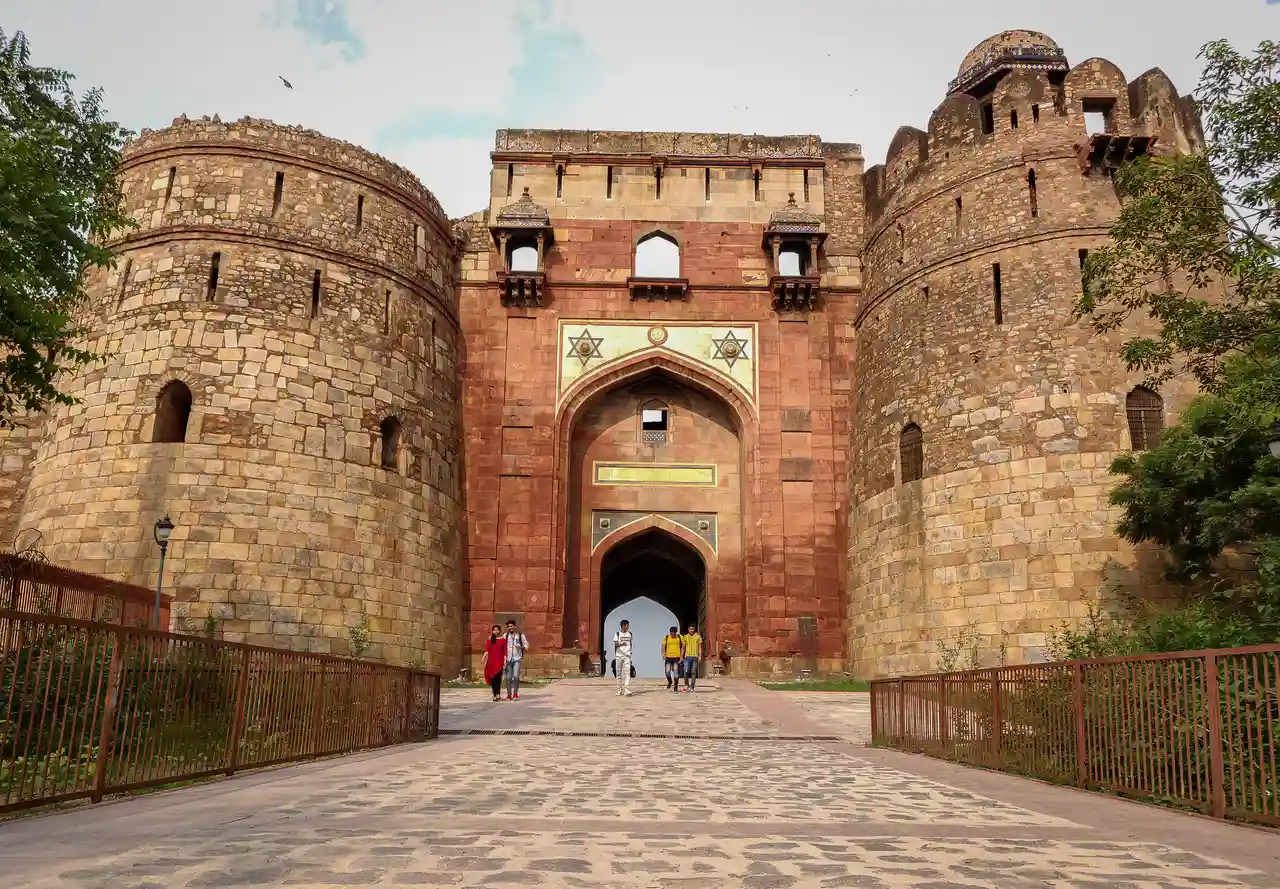
When you think of Delhi’s many forts, Purana Qila often gets overlooked in favor of its more famous cousin, the Red Fort. But this 16th-century fortress tells one of the most fascinating stories of Old Delhi’s past. Perched on the banks of the Yamuna River, the massive stone walls and imposing gates have watched over the city through countless rulers and empires. Inside, you’ll find yourself wandering through layers of history – from ancient pottery shards dating back 3,000 years to intricate Islamic architecture and hidden pathways. The fort’s location next to the Delhi Zoo makes it a perfect stop for families, and the peaceful lake outside its walls offers a welcome escape from the city’s busy streets.
Connaught Place

Step into the beating heart of Delhi at Connaught Place, one of India’s largest financial and commercial hubs. This colonial-era market complex features a ring of white Georgian-style buildings arranged in two concentric circles, packed with both international brands and local boutiques. Stop by United Coffee House, a historic restaurant that’s been serving guests since 1942, for some traditional Indian dishes in an old-world setting. At night, join the locals at Social or Lord of the Drinks, two popular hangout spots where you can enjoy cocktails and music while taking in the neighborhood’s lively atmosphere.
Jantar Mantar
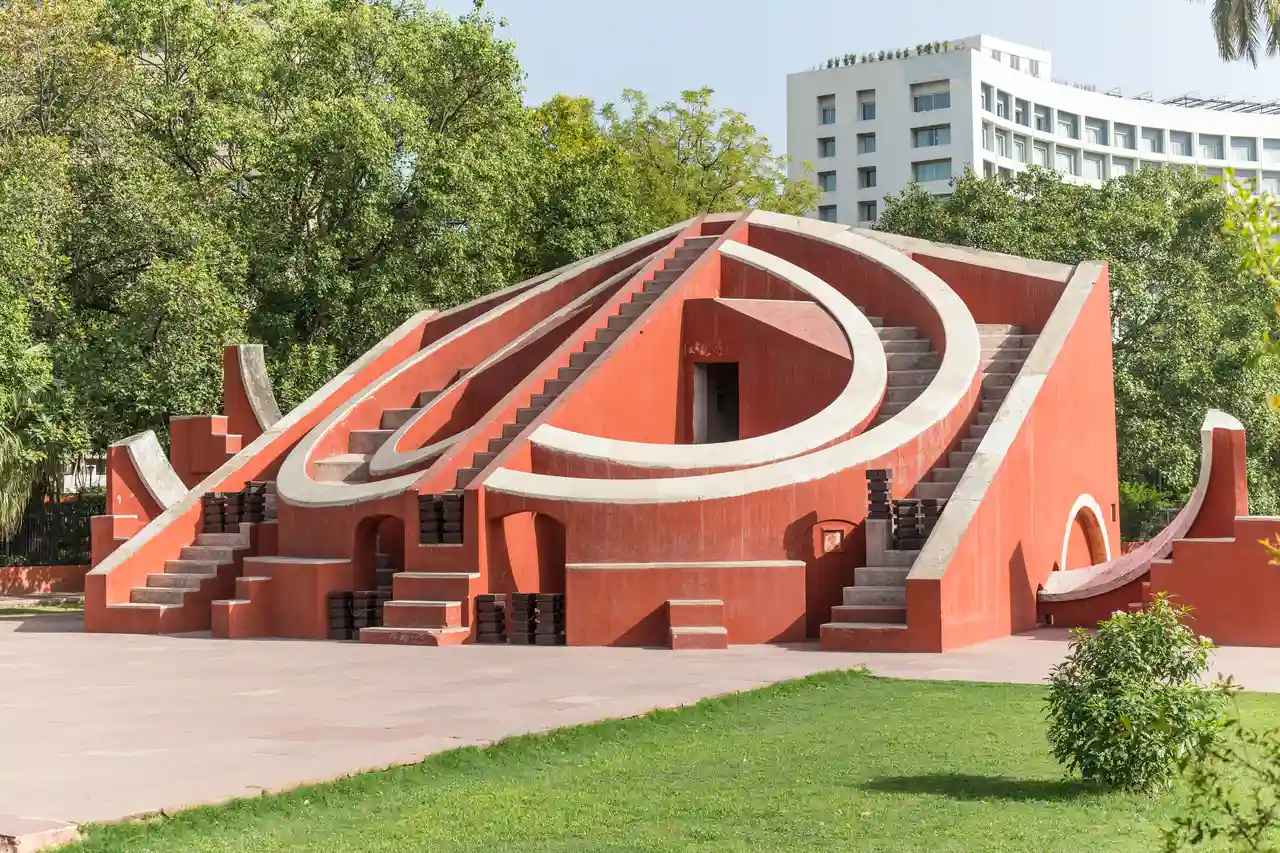
Step back in time at Jantar Mantar, an ancient astronomical observatory built in 1724 that still works perfectly today. This collection of 13 architectural astronomy instruments lets you track celestial movements and tell time using nothing but sunlight and shadow. You can walk among the massive geometric structures and learn how people measured the positions of stars and planets hundreds of years ago. The giant sundial, known as the Samrat Yantra, is especially impressive – it can tell time down to a 2-second accuracy. Visit during the afternoon when the sun is high to see these instruments in action and understand how they helped shape our understanding of space and time.
Dilli Haat
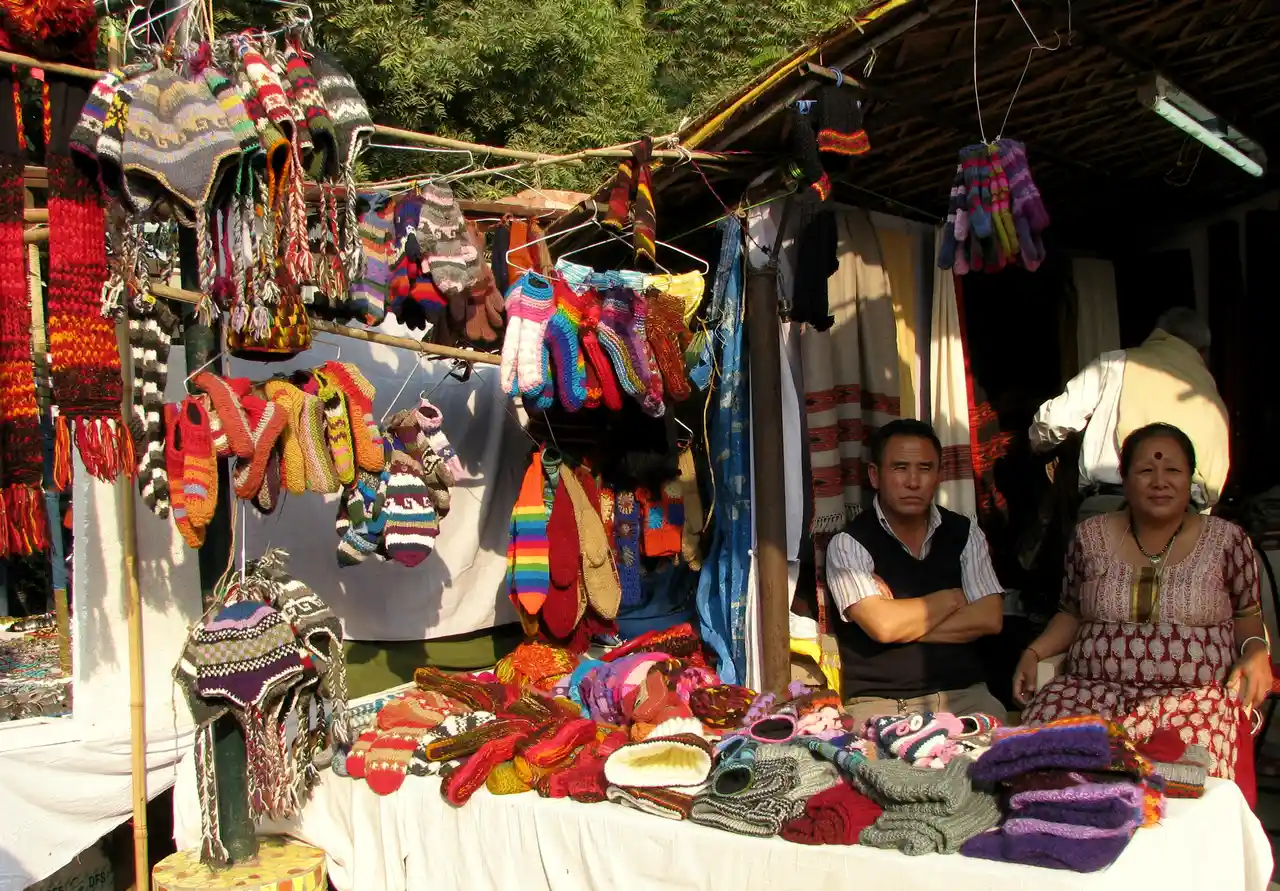
Located in South Delhi’s INA Market area, Dilli Haat feels like a permanent festival celebrating India’s diverse cultures. Like many markets in Delhi, it’s filled with shops and food stalls, but what sets it apart is how it brings together craftspeople from all corners of India under one roof. As you walk through the open-air complex, you’ll hear the chatter of vendors from Kashmir to Kerala, each selling their regional specialties and handicrafts. Because of its rotating roster of artisans who come here on 15-day cycles, the market’s character changes constantly – visit twice, and you might find completely different treasures each time. The food court here tells its own story of India’s culinary diversity, with stalls serving everything from Nagaland’s bamboo shoot curry to Bihar’s litti chokha.
Raj Ghat

Pay your respects at Raj Ghat, the memorial dedicated to Mahatma Gandhi, India’s beloved Father of the Nation. The simple black marble platform marks the spot where Gandhi was cremated in 1948, surrounded by peaceful gardens and an eternal flame that burns day and night. Take a quiet moment to walk through the serene grounds, where world leaders and visitors alike come to honor Gandhi’s legacy of non-violence and peace. Time your visit for Friday afternoons to hear local musicians sing devotional songs, or explore the nearby museum to learn more about Gandhi’s life and teachings.
Safdarjung Tomb

Built in the 1750s, Safdarjung Tomb is a peaceful oasis in the heart of bustling Delhi. Much like other Mughal monuments in the city, it features elegant domed architecture and manicured gardens. But what sets it apart is how wonderfully uncrowded it remains, even during peak tourist season. Just wander through its serene courtyards and climb to the main platform, where you can gaze out over the surrounding park without fighting through crowds of selfie-takers. Because it was one of the last major Mughal tombs built in Delhi, you’ll notice its slightly different architectural style – less ornate than its predecessors but with a charm all its own. The tomb was built for Safdarjung, a powerful nobleman who served as the prime minister of the Mughal Empire, and today it stands as a quiet reminder of Delhi’s royal past.
National Zoological Park
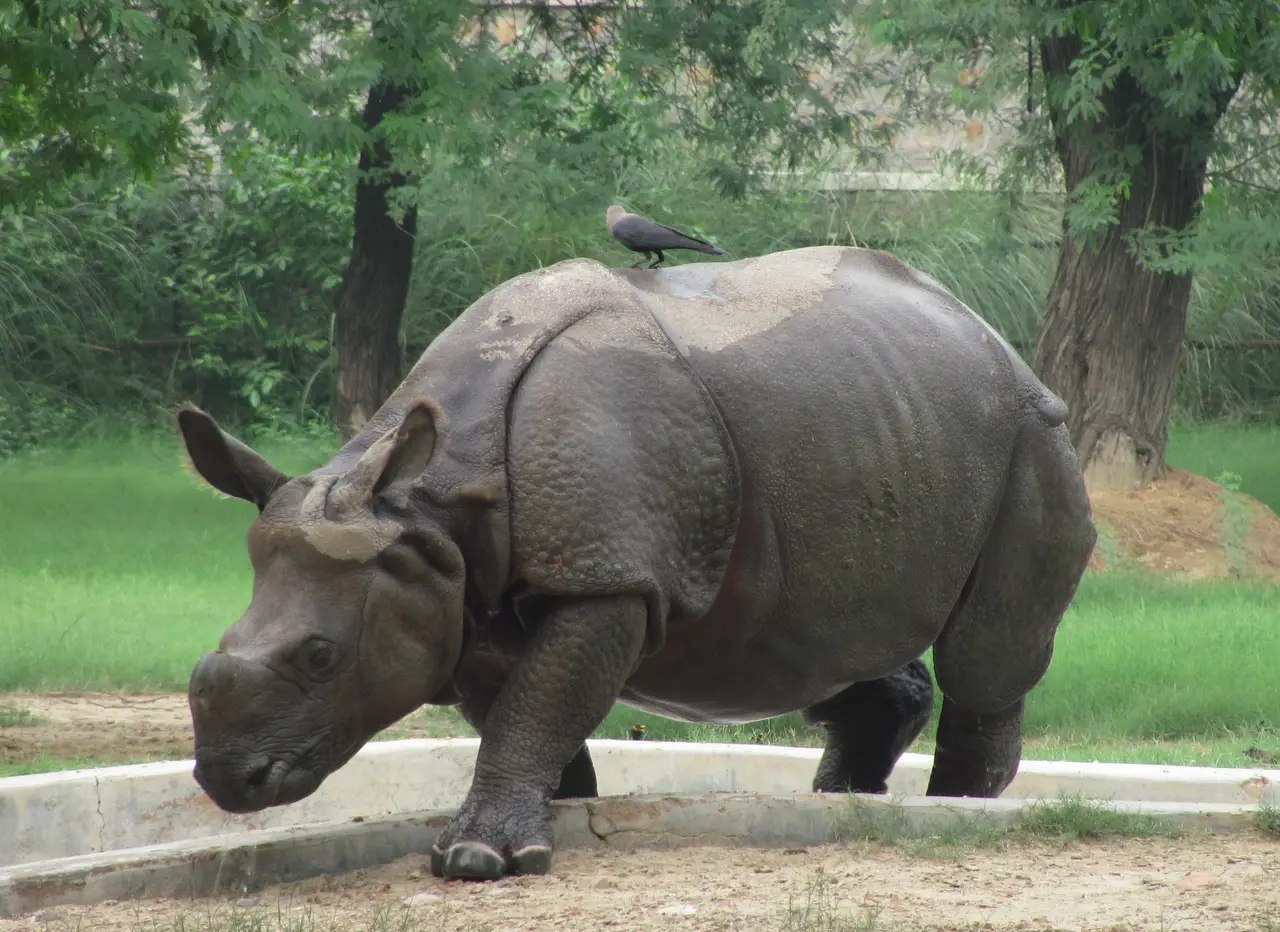
Many visitors flock to the National Zoological Park Delhi to see its famous white tigers, but this 176-acre sanctuary offers much more than just big cats. The zoo houses over 1,350 animals across 130 species, from leopards and hippopotamuses to vibrant Indian peafowl and gharials. Walking through its shaded pathways feels like taking a journey through different wildlife habitats, complete with a lake where you can spot various water birds. While the zoo draws crowds during weekends and holidays, weekday mornings provide a quieter experience for watching the animals go about their daily routines. You can easily spend half a day here exploring the various enclosures, learning about conservation efforts, and enjoying the peaceful green spaces that offer a welcome break from Delhi’s busy streets.
Garden of Five Senses

Located in the peaceful Said-ul-Ajab neighborhood of South Delhi, the Garden of Five Senses offers a unique escape from the city’s usual hustle. Like many parks in Delhi, it has green spaces and walking paths, but what sets it apart is how it encourages visitors to experience nature through all their senses. As you wander through its 20 acres, you’ll find yourself touching different textures of stone sculptures, smelling aromatic herbs, and hearing the gentle splash of water features. Because of its thoughtful design incorporating elements from Mughal gardens and modern landscaping, the garden has become a favorite spot for both locals seeking peace and artists looking for inspiration. Food courts and craft bazaars add a little extra life to the space, making it more than just another city park.
Khan Market

Named after the Pashtun rulers who once governed the area, Khan Market has grown from a refugee marketplace into one of Delhi’s most sought-after shopping spots. Unlike the chaotic bazaars of Old Delhi, this U-shaped market offers a more laid-back shopping experience with its mix of independent bookstores, family-run shops, and modern cafes. What makes Khan Market special is how it manages to keep its old-world charm while catering to modern tastes. You’ll find traditional spice sellers next to sleek coffee shops, and vintage book dealers beside trendy fashion boutiques. Because of its location near diplomatic enclaves, it’s become a favorite hangout for both locals and expatriates, creating an interesting blend of Delhi’s past and present in one compact space.